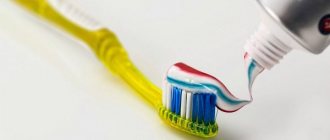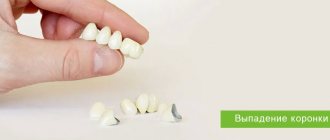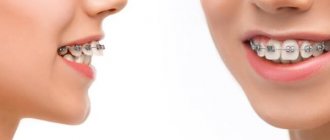Specialists who literally save or recreate snow-white teeth from scratch - dentists - have not only specializations, but also categories.
What category does a dentist start with at the beginning of his career and what category can a dentist receive after a few years and does this have any advantages? Let's try to figure it out.
Dentistry is an interesting science. True, the majority are ready to treat it with interest, while being as far as possible from the representatives of this very dentistry. Nevertheless, many young people with an interest in medicine consider dentistry as a future profession.
Receiving a higher category of dentist is a consequence of development in the profession, and first you need to become such a doctor. And it must be said that becoming a dentist is very, very difficult. This is a fairly long process and it requires a lot of effort and hard work, just like any medical profession. Getting into medical school is not easy, completing it successfully is even more difficult. But, still, the game is worth the candle and becoming a dentist is a very worthy choice. This is one of the highest paid specializations among doctors. Not to mention that this is a very interesting activity, although it is not suitable for everyone.
Who is a dentist
The phrase first appeared in 1710. Until this time, teeth had not been treated; they fell out and destroyed on their own. Some patients died from excruciating toothaches. In the best case, the diseased element was simply pulled out of the oral cavity.
Dentistry in Russia began to develop during the time of Peter 1. He opened the first dental schools, but only 10 years later a decree was issued allowing treatment of the oral cavity after receiving a medical education. Gradually, dental services have become more in demand. In addition, people experienced more dental problems due to the switch to soft foods.
A few centuries ago, people needed doctors of various profiles, but in terminology the word “dentist” was more often used. Today, this concept has been replaced by the term “dentist”.
To become a dentist, you must complete 3 years of training and receive a diploma of the appropriate level of qualification. A dentist is not entitled to solve certain dental problems:
- pulpitis;
- malocclusion;
- prosthetics;
- anesthesia.
In small villages, a dentist can also perform the above tasks if there is no specialist in the required profile. Abroad, a dentist is called a dentist. He receives a diploma after completing secondary education.
What does a dentist with secondary education do? He deals with simple manipulations, which include:
- examination of the patient's oral cavity;
- establishing the cause of the violation;
- treatment of gum pathologies;
- filling minor areas of damaged enamel;
- consultation on performing hygiene procedures;
- Recommendations for choosing suitable products for personal oral hygiene.
- issuing a referral to specialized specialists if serious dental problems are detected.
The list of responsibilities of a dentist is quite extensive. Due to this, the specialist is a highly sought-after doctor in clinics.
Documentation
Four months before recertification, the specialist must submit an application for confirmation or obtaining a higher qualification. Passport details, existing category and date of receipt, personal signature are indicated here.
A certification sheet and a report on the work done over the past few years, approved by the chief physician of the health care facility and the human resources department where the certified person works, are also filled out. Copies of documents on education, work history and assignment of current qualifications are also sent to the commission.
Categories of dentists
After a certain period of time, the doctor can improve his qualifications. The category largely depends on the doctor’s work experience and the completion of additional training courses. There are 3 categories in total that a dentist can receive:
Dental diseases, their names and photos
- Second. Awarded to people whose work experience is more than 3 years after certification. To obtain a category, a doctor must be savvy in both theoretical and practical skills.
- First. Given to dentists who have worked in their specialty for more than 7 years. In this case, he needs to study related disciplines related to prosthetics, dental work, etc.
- Highest. Issued to doctors whose work experience exceeds 10 years. Doctors of this level of training have advanced theoretical and practical knowledge and skills.
Not only the doctor’s knowledge, but also his salary depends on the category. Some dentists only treat children. They can eliminate small cavities caused by a child's excessive consumption of sweets or poor oral hygiene.
In some cases, the dentist is unable to provide assistance to a small patient. This is due to several factors:
- A child's jaw is different in structure and structure from an adult's.
- The dentist does not have special equipment and devices for treating pulpitis or complicated caries.
- Lack of drugs necessary for therapy.
- Inability to find an approach to the child.
If one of the listed problems is present, the child is referred for treatment to a pediatric dentist. In most cases, a dentist can also cope with simple caries in a baby. The dentist also conducts preventive examinations of children 2 times a year.
Uncomplicated caries in a child
Attestation report
The introduction includes information about the identity of the doctor and the medical institution where he holds a position. The characteristics of the department, its equipment and staff structure, and the performance indicators of the department in the form of statistical data are described.
The main part consists of the following points:
- characteristics of the population undergoing treatment in the department;
- possibility of carrying out diagnostic measures;
- carried out medical work with the indicated results for specialized diseases;
- deaths over the past 3 years and their analysis;
- implementation of innovations.
The conclusion of the report consists of summarizing the results, indicating possible problems and examples of their solutions, and opportunities for improvement. If published materials are available, a copy is attached. A list of literature used and studied over the past few years is indicated.
Dentist profession
A dentist has more authority regarding the conduct of medical procedures. Specialty training lasts 6 years, during which doctors master several important disciplines. Upon completion of training, the specialist is asked to choose one of the areas: therapist, surgeon, orthodontist, orthopedist or hygienist.
Comprehensive training is necessary in order to know the structure of the human body and be able to establish the relationship of one organ with another. The doctor also has to master the basics of psychology, since some patients come to the office in a depressed state, which aggravates the therapy.
Each category in dentistry should be considered in more detail.
Therapist
The doctor treats the diseased tooth and installs a filling. The dentist also copes with these responsibilities. Both specialists can also examine the patient’s oral cavity and diagnose the disease. The difference between a dentist and a dentist is that a dentist solves minor problems (gum inflammation, mild caries). All the therapist’s work is aimed at combating advanced caries and its consequences (pulpitis, periodontitis, dental cysts, etc.). Let’s take a closer look at each of the diseases that the dentist deals with.
In the photo, pulpitis is one of the complications of caries that requires dental care.
Caries is caused by the gradual destruction of the enamel elements. If treatment is not timely, the pathological process spreads to dentin and pulp. The problem arises under the influence of negative external factors: taking certain types of medications, consuming carbohydrate-containing foods, and lack of proper oral care.
One of the complications of caries is pulpitis, in which the nerve endings of the tooth are involved in the pathological process. The main symptom of the disorder is acute severe pain, which is difficult to relieve even with potent drugs. Pulpitis requires immediate treatment from a dentist.
Periodontitis develops as a result of bacterial infection of the jaw bones. The condition can cause complete or partial edentia (loss of teeth).
Another problem that the dentist deals with is periostitis (flux). The disease is accompanied by severe swelling of the soft tissues of the mouth and intense pain.
The competence of the general practitioner also includes solving non-carious problems:
- demineralization of enamel;
- fluorosis;
- wedge-shaped defects;
- enamel abrasion;
- necrosis of bone tissue.
- increased sensitivity of teeth;
- diseases of the mucous membranes of the mouth (stomatitis, periodontitis, gingivitis).
There is no difference between a dentist and a dental therapist. Both specialists deal with general problems and provide referrals to specialist doctors if necessary.
Some private clinics provide services to restore the aesthetics of a smile. They include enamel whitening, elimination of bad breath, and dental restoration with reflective composites. All of the above types of services are provided by dental therapists.
Orthodontist
The main task of the doctor is to perform prosthetics. The doctor restores the chewing function of the jaw in the absence of one or more elements in the oral cavity. In addition, with the help of orthodontic structures, the aesthetics of a smile is restored, thanks to which a person ceases to be embarrassed by others.
Another name for an orthodontist is a prosthetist. First, all patients see a therapist, who issues a referral to an orthodontist.
The differences between the specialist in question and the dentist are obvious: the first is engaged in restoring the shape and aesthetics of the tooth, the second is in treatment.
Today, orthodontists are in increasing demand. They can offer patients modern prosthetic options to solve various occlusion problems. Orthodontic structures differ in purpose, cost and installation time. In each specific case, the doctor selects the best option for the patient.
Who are dentists?
In the field of dentistry, there is another concept - dentist. How is he different from a dentist and a dentist?
Essentially, a dentist is a dentist (corresponding to a medical assistant). This concept applies to dental professionals working abroad. It has not taken root in our country. And many people have heard the word “dentist” only in foreign films; in everyday life it is “unheard of.”
Since a dentist is the same as a dentist, dentists are therefore mid-level doctors, that is, without a full higher education and with a limited range of services provided.
So, having figured out who a dentist and a dentist are and realizing that these are specialists in the same medical specialization, but with different tasks, you can easily contact a dental clinic for help if the need arises.
It is worth considering that there is also a difference between a dentist and a dentist in the prices for services. Dentists' prices will be significantly higher than the price for dentists' work.
Now we know who a dentist is. We also looked at what it does and its relevance, so you can safely contact any clinic, having the right concepts about dentists and dentists.
Rubric “Question and answer”
Who is a dentist?
The concept was used in the 20th century and is now considered obsolete. Previously, the term was used to describe dentists who did not have a special higher education. In foreign countries, a dentist is a dentist who has received secondary education in his specialty. This term can be used to describe a dental laboratory specialist, a dentist, or a paramedic.
Can a dentist perform the duties of a dentist?
The answer to the question will be negative, since the dentist does not have the necessary skills and knowledge to carry out the procedures that are the responsibility of a dental therapist.
Points for promotion
Each specialist receives points that are used in making decisions about qualifications. They are awarded for attending conferences, including international congresses, giving lectures to colleagues or nursing staff, distance learning with a final certificate, and taking courses.
Additional points are awarded for the following achievements:
- publishing of textbooks, manuals, monographs;
- publication of an article;
- obtaining a patent for an invention;
- presentation at symposiums with a report;
- speaking in institutions and the media;
- obtaining a title;
- defense of the thesis;
- awards by public authorities.
What diseases does it treat?
Consultative assistance from specialists in this profile is required in almost any situation when there are some problems with the teeth and jaw.
However, there are a number of diseases that are treated exclusively in the dental therapy department, since they do not require surgical or orthodontic intervention. Among these diseases, the most popular ones should be highlighted: Treatment of caries by a dentist - before and after photos
- Caries. A problem familiar to everyone, which is characterized by the irreversible destruction of dental tissue by dangerous bacteria. It often occurs without pain, but has dangerous consequences and side effects.
- Pulpitis. It consists of inflammation of the dental nerve, and develops against the background of the impact of caries infection on soft tissues. It is characterized by aching, severe pain that increases with pressure. Sometimes the first stages pass without symptoms.
- Periodontitis. Destruction of soft tissue between a human tooth and the alveolar process. There is a traumatic option and consequences of caries: in this case, treatment usually takes a long period.
- Periostitis. It is also a classic flux. Inflammation of the soft tissues of the periosteal region. It often occurs when the wrong choice of medications is used in the treatment of pulpitis or periodontitis. The pus is removed, sometimes leading to tooth extraction.
Professional tasks
During an outpatient (polyclinic) appointment, the tasks of a surgical dentist include:
- removal of unpromising teeth and their roots;
- rehabilitation of small purulent cavities;
- trimming the hyoid frenulum and upper lip frenulum;
- early diagnosis of malignant and specific diseases of the oral cavity and jaw apparatus;
- cutting of the gums above the teeth.
In a hospital setting, the range of responsibilities of a doctor increases:
- opening and sanitation of purulent foci of the jaw, floor of the mouth;
- bone grafting of the lower or upper jaw;
- surgical treatment for malignant tumors of the maxillofacial area;
- immobilization of the jaw for fractures;
- arthrotomy for temporomandibular periarthritis;
- plastic surgery of the skin for traumatic injuries;
- operations on the ducts and salivary glands;
- osteoplastic surgery for anatomical abnormalities;
- interventions for neurological diseases (neuritis).
Orthopedists are engaged in the placement of artificial teeth (implants), as well as the installation of removable and non-removable prosthetic structures.
In orthodontics, professionals deal with correcting the alignment of teeth. The main task of doctors in this specialty is bite correction using braces or other orthodontic structures.
Correction of bite in children and adults
1. Aligners (or mouth guards). They are made from very durable materials.
Aligners have a number of advantages:
- the structure is removed;
- they are invisible to the eye, as they are made of transparent material;
- discomfort from the aligners is minimal;
- the devices do not require specialized care. You just need to maintain hygiene by rinsing the trays with water.
2. Trainers. These structures are manufactured in series. In this regard, these devices are available to almost all groups of the population. The devices themselves are worn only a few hours a day. The wearing time depends on the doctor's prescription. Trainers are used by orthodontists to correct minor bite deformities. The peculiarity of using the devices is that they allow you to straighten teeth that are located separately from each other.
3. Braces are brackets connected by a power arc. Braces are attached to the teeth, fixing the desired position. The braces correction method is universal, as it copes with many deviations. Period of wearing braces: from 2 months to 5 years. The period of straightening depends on how crooked the teeth were at the very beginning and how the body adapts to the changes made.
Ideally, the child will be examined by an orthodontist at the age of two. At this time, the doctor’s adequate influence will be effective, until the malocclusion begins to affect the functioning of the masticatory muscles and changes in speech.
With adults the situation is more complicated. As noted above, it is best if you contact an orthodontist at an early age. It should be noted that there are no differences between the treatment of children and adults. Only in adults this process takes a long time and sometimes it is necessary to remove some teeth, which can become an obstacle to prosthetics.
In some cases, the correction of the bite may not be completely completed; usually the dentoalveolar and distal bites are subject to treatment; sometimes the mesial bite can also be cured. In the case of children, the orthodontist corrects the malocclusion, but in adults the cause of the malocclusion must also be treated. First, the patient needs to undergo a thorough examination, then preparation, and only then the prosthetics itself.
Thus, to correct a dental malocclusion, an adult needs to carry out a set of measures to achieve the desired effect. As for prognoses, they depend on a large number of factors, in particular, on the patient’s diseases, individual characteristics and causes of malocclusion. A good prognosis in treatment is achieved with a dentoalveolar form of occlusion than, for example, with a gnathic form.
It follows that malocclusion and crooked teeth are a terrible problem that can lead to pulpitis, caries, periodontal disease and other dental diseases. Therefore, the sooner you visit an orthodontist, the more effective the treatment will be. Before choosing a dentist, you should consider the reputation of the clinic and the availability of quality equipment.
Features of working with a child of a professional with higher education
Children's health is made up of various factors, one of which is children's teeth. Pediatric dentistry is an independent branch in this field of medicine.
- Pediatric dentistry is the most complex, unlike adult dentistry. In this case, both the diseases themselves and the methods of therapy are completely different.
- Also, in this area of dentistry there are no adult infections.
- All procedures must take place under anesthesia. You can’t do anything without it, not even treat caries. The healthy psyche of a child is the main task for a doctor.
- Anesthesia should occur in such a way that children do not see or feel it; a good dentist knows how to do this.
- In children, various pathological processes in the mouth develop much faster.
For example, baby teeth quickly become infected with caries, unlike permanent teeth. In just a few months, a child’s caries can turn from a dark spot into a deep formation or even completely collapse. - When treating children's teeth, it is necessary to take into account the location of future permanent elements; this is not the case in adult dentistry.
- Not all doctors know how to work with children’s teeth, so the pediatrician has a separate specialty – “pediatric dentist.”
A self-respecting children's doctor will not allow small children to sit in line outside his office. He is able to captivate the child so that he completely forgets that he is in the dentist’s office.











